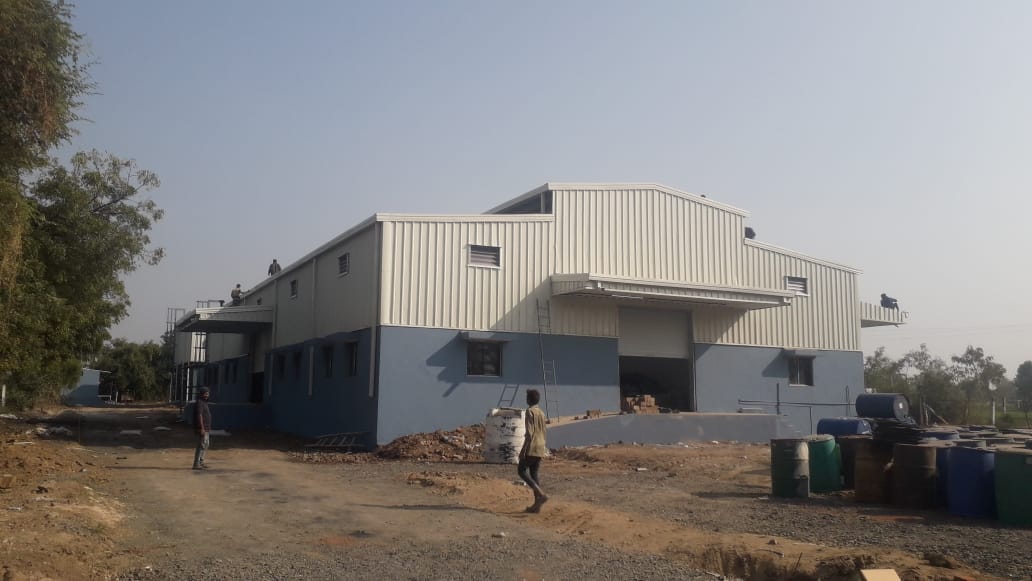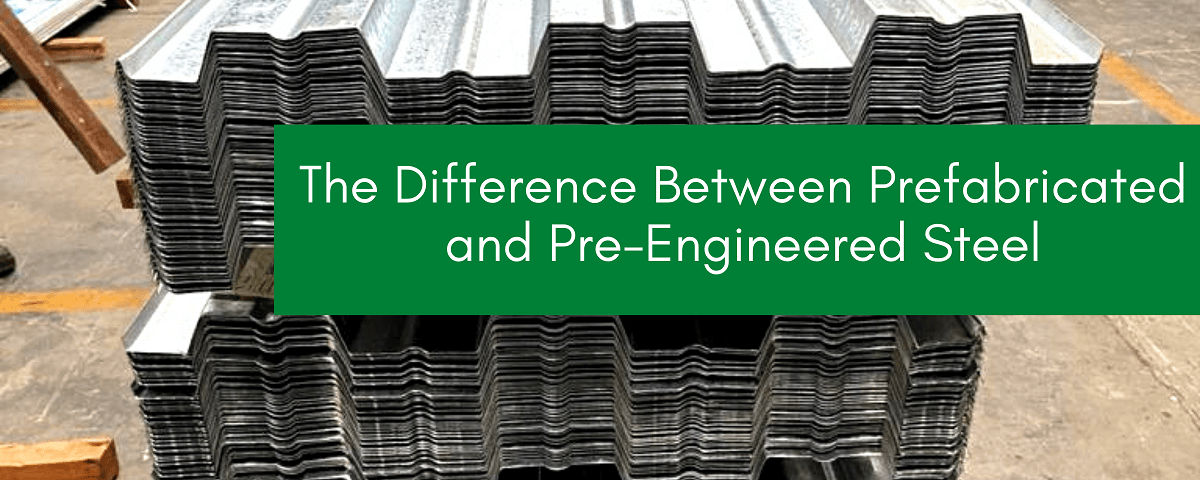- Bansal Roofing Products Ltd
- +91-9925050913
- inquiry@bansalroofing.com
The Difference BetweenPrefabricated and Pre-Engineered Steel

Why Does A Metal BuildingCost Less In The Long Run?
June 25, 2020
How To Keep Industrial FactoryCool Without Air Conditioning?
July 22, 2020If you are new in the construction business or trying to find which type of building will suit your business then probably you have seen articles throwing around words such as “prefabricated buildings,” “pre-engineered buildings,” “modular buildings”. But no one explains the proper difference about this. What are they? How are they Different from each other? And which will be more beneficial for you? In this article, we will clear all the basic fundamentals of Prefabricated and Pre-Engineered Steel. So let’s get started at the bottom of the topic.
Basic Fundamentals of Prefabricated and Pre-Engineered Buildings:
Steel buildings are made in many different forms – from prefabricated and pre-engineered buildings, these two are the most popular choices when it comes to steel buildings. Both construction types are strong, efficient and economical, and all you need to know is what works best for your company or project. They may both sound similar but the process of making and assembling is very different from each other.
Prefab Building or Prefabricated Buildings:

A prefabricated building, also called a prefab building, means that the entire building, house or part of it is first constructed in a factory. For example, the framing (or skeleton) of pre-engineered steel construction will be manufactured in a factory and then loaded down from the factories to the working site by truck and mounted as a massive erector at the location only.
Also Read: 10 Things To Consider Before Hiring An Industrial Roofing Contractor
Prefabrication is the process of making whole structure components of the building at factories or other manufacturing sites and then transferring it from the manufacturing site to where the building is going to take place. All the components are then just assembled or sub-assembled to make the final structure of the building. The term “ PREFAB” itself distinguishes this process from the regular traditional way construction practice where the basic materials are only transferred to the construction site where the whole process of making the building is done step by step.
In construction and civil engineering, the most common forms of prefabrication are the use of pre fabricated and prefabricated steel sections. In a type of building that often replicates specific parts or structures, for example making big ships and factories. The framework required for moulding concrete components on-site and that can be difficult to construct, at the same time as delivery of wet cement to the site consumes time management before it starts to set.
Pre-Engineered Building (PEBs):
In general, a pre-engineered building refers to a metal building. Steel is especially well-suited to pre-engineering. Steel is well known for its properties and strength. The load-carrying properties of steel, created in mills according to strict industry standards, are consistent and verifiable.
Also Read: Green Industrial Buildings For A Better Tomorrow
As the word pre-engineers implies, before building materials are produced, a structural engineer determines basic building specifics on the basis of local building codes and required loads. State-of-the-art steel-assisted computer design programs enable engineers to plan the building fast and accurately in 2D. The programs produce drawings based on the data given by the designer, describing the exact requirements for constructing the steel framing of each component. Then to calculate the size and spacing of the steel components, the engineer uses 3D models of the structure.
A pre-engineered building mainly refers to a building that determines the configuration before building materials are manufactured. Pre-engineered buildings can even be designed to allow greater flexibility in design, using a prefabricated skeleton to create a framework for the new building.
The pre-engineered metal building is customized to the client’s needs and designed to meet the exact specifications. These buildings are so versatile that they can be extended quickly, withstand harsh environmental conditions, and feature maintenance-free exterior systems.
For both industrial and commercial activities, pre-engineered buildings are suitable. Warehouses, manufacturing plants, hangar aircraft, cold storage facilities, working shops, stadiums, grocery stores, etc. In addition to the advantages of quality, performance and longevity, Pre-engineered metal building systems offer modern solutions to every building construction.
Also Read: 5 Benefits Of Pre-Engineered Buildings (PEBs)
Over the years, the pre-engineered metal construction method has developed into structural element assemblies that work together to produce a very efficient system. Each part of the system is designed to fit exactly into buildings that can be built more rapidly and more accurately than conventional methods can be done.
The pre-engineered metal design system is advantageous because it enables large column-free enclosures to be created very economically. The other structural options, like milling steel and lightweight metal frames, use more steel and are consequently significantly more expensive to build.
Custom buildings from BANSAL Roofing Products Limited are fabricated to any size, shape, height or style, as long as the design meets the specifications of the customer. We have your customized project covered whether it is a she-shed, a restaurant or an aeroplane hangar. BANSAL designs and manufactures pre-engineered steel building, and is one of the leading and advanced manufacturers.




